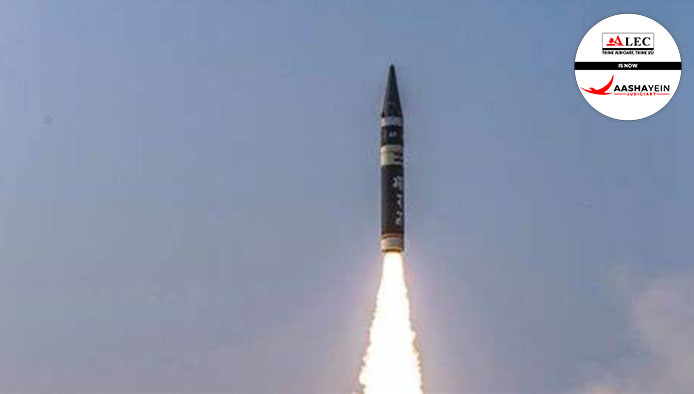Introduction
As a part of bolstering its strategic arsenal, India successfully conducted the maiden flight test of the Long Range Land Attack Cruise Missile (LRLACM) on Tuesday. The test was carried out from the Integrated Test Range (ITR) located off the coast of Chandipur, Odisha from a mobile articulated launcher. It can be considered an important milestone for The Defence Research and Development Organisation (DRDO) as it increases the defense force of India.
Background of the test
In the early 1980s, India began the process of becoming self-sufficient in missile technology. The government recognized that developing domestic missile systems would improve national security and reduce dependency on outside vendors. An important factor in the advancement of India's missile capabilities was the start of the Integrated Guided Missile Development Program (IGMDP) in 1983. India was able to effectively create several missile types under this program, including cruise, surface-to-surface, and surface-to-air missiles.
The Defence Acquisition Council approved the LRLACM project in July 2020 when it was unveiled at the DefExpo 2020, aiming to create a cruise missile capable of hitting long-range targets. This missile was developed to improve India’s ability to strike from a distance.
About the test
All of the subsystems performed as planned and met the primary mission objectives during the test. According to a statement, ITR set some range sensors at various points along the missile's flight path, including radar, an electro-optical tracking system (EOTS), and telemetry, to monitor its performance.
The missile demonstrated its capacity to execute a variety of maneuvers while flying at varied heights and speeds, and it was able to effectively follow its intended trajectory by utilising waypoint navigation.
You can also read the latest judgment by visiting [Latest Judgment]
For more information, visit [Aashayein Enquiry Section]
Long Range Land Attack Cruise Missile (LRLACM)
LRLACM is another gem in modern military arsenals, providing the capability to carry out long-distance strikes on strategic targets from stand-off distances. This allows the missile to be launched from a position far from the target, ensuring the safety of both the launch platform and the personnel operating it by keeping them out of danger.
The Long-Range Land Attack Cruise Missile (LRLACM) comes equipped with advanced avionics and cutting-edge software, which significantly improve its performance and reliability. Designed for versatile deployment, it can be launched from mobile ground-based platforms as well as frontline naval ships.
Significance of the launch
The Long-Range Land Attack Cruise Missile (LRLACM) is designed to enhance strategic strike capabilities for long-range operations. It is equipped with an initial-stage booster featuring thrust vectoring for precise launches. Once the booster is discarded, the missile’s turbofan engine takes over, enabling it to maintain subsonic speeds while flying at low altitudes for approximately 1,000 km in around 20 minutes. As it approaches the target, the missile shifts to a supersonic sprint for effective terminal engagement. While DRDO and Russia have collaborated on anti-ship missiles, the LRLACM represents a land-attack adaptation tailored for use by the Indian Air Force and Army, featuring upgraded seeker technology to suit these roles. Comparable to well-known systems like the US Tomahawk and Russia’s Kalibr, the LRLACM emphasizes precision and long-range capabilities. Developed by DRDO’s Aeronautical Development Establishment (ADE) in Bengaluru, this project is largely indigenous, with most components sourced locally, showcasing India's advancing defense technology.
Regional and global implications of the launch
The successful development of long-range missiles like the LRLACM has significant effects. Regionally, it strengthens India’s ability to deter potential threats, especially in relation to its neighbouring countries. Globally, it boosts India’s position as an important contributor to defense technology and innovation. By testing the LRLACM, India joins a select group of nations capable of creating and using advanced long-range missile systems

